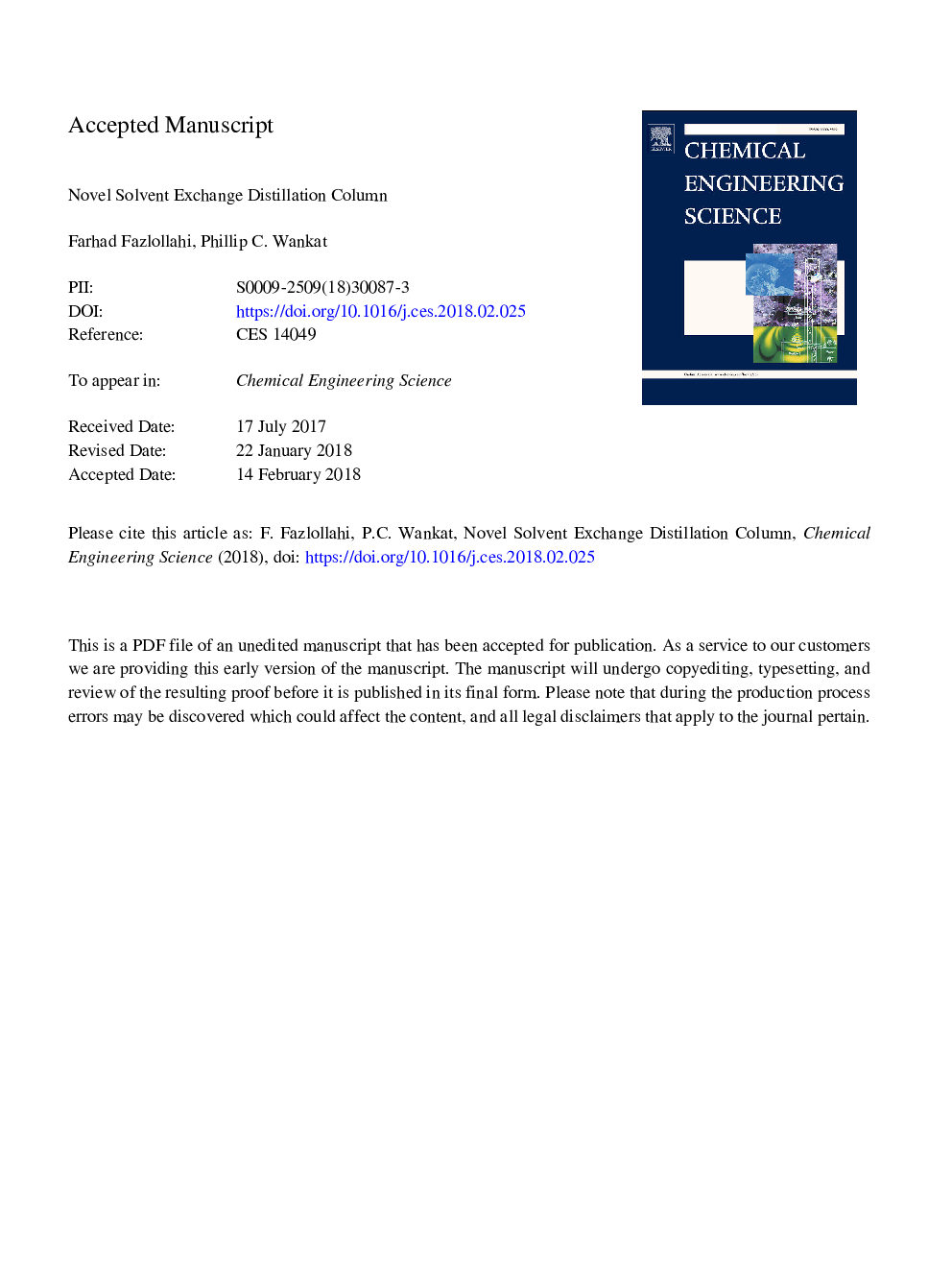| Article ID | Journal | Published Year | Pages | File Type |
|---|---|---|---|---|
| 6588509 | Chemical Engineering Science | 2018 | 30 Pages |
Abstract
Solvent exchange or solvent swap is commonly used in production of complex organic molecules when the next processing step requires that the solute be dissolved in a different solvent. The current methods for solvent exchange, batch distillation and diafiltration, also produce a waste stream containing a mixture of the feed and chasing solvents that must be separated, usually by distillation. The results obtained from an Aspen Plus model of the new exchange column are compared with constant volume batch distillation simulations for both still pot and still pot plus column systems. The new solvent exchange column reduces the amount of the waste stream, and when the feed solvent is the more volatile solvent the exchange column can often be designed to produce feed solvent at the desired purity; thus, eliminating the need for an additional distillation column to separate the two solvents. When the initial solvent is the less volatile component, the new exchange column will often be competitive with constant volume diafiltration which is currently used.
Related Topics
Physical Sciences and Engineering
Chemical Engineering
Chemical Engineering (General)
Authors
Farhad Fazlollahi, Phillip C. Wankat,
